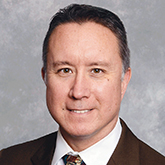3 ways to think about physician engagement
Physicians manage a wide range of responsibilities beyond direct patient care, including completing medical records, attending meetings and staying current on the latest clinical advancements. Engaging physicians in health system improvements—even when it impacts patient care—can be difficult. But it doesn’t have to be impossible. Here are three options that offer a win-win for the physicians, their patients and the health system.
1 | The physician’s role in electronic health records
While early electronic health record (EHR) systems focused on collecting patient data for billing purposes and regulatory compliance, later versions improve timely record-keeping and support quality and other initiatives. It’s a lengthy and time-consuming process for some physicians to click through the EHR screens and drop-down menus when entering details from a patient visit. Customizing the EHR to improve physician workflow is best done with physician help. Consulting physicians before restructuring relevant fields enables them to find the information they need more quickly, because they know where to look for it.

For HealthTrust Physician Advisor Frank Kolucki Jr., M.D., FACOG, Chairman of Obstetrics and Gynecology at Moses Taylor Hospital in Scranton, Pennsylvania, “the EHR can be a great resource to ensure that evidence-based, protocol-driven medicine is being practiced.” Adding order sets (a collection of instructions for healthcare providers that are used to treat a patient) as a “forcing function” requiring physicians to complete specific information, minimizes potential patient harm and ensures that up-to-date care is being delivered, he says.
These order sets should be reviewed by physicians regularly. In Kolucki’s group, they review order sets every two years. “Medicine is always changing. Evidence is always changing. So, a team’s practice has to change,” he says. Collaborating with providers on the EHR is paramount to ensure the standard of care is being met, as well as for physician buy-in.

Templates can help doctors find information in the records more easily and ensures they don’t miss key details, says Vijay Chilakamarri, M.D., an interventional cardiologist at Lutheran Health Physicians and a HealthTrust Physician Advisor. Templates “are in the best interest of the patient and they help the hospital meet criteria for core measures, to be adequately reimbursed,” he explains. When affiliated hospitals make any major changes to their EHR system, including updating or adding templates, a physician champion from their group collaborates with the hospital and Lutheran Health Physicians on compliance.
2 | Include the physician in value analysis
Physicians today play a greater role in value analysis than in the past. Jonathan Mandelbaum, M.D., a bariatric and general surgeon with Franciscan Health, medical director for the Franciscan Alliance and a HealthTrust Physician Advisor, shares that his system, with 13 hospitals and multiple surgery centers, did not have a physician on the value analysis team. That changed last year when he created a Value Analysis Physician Advisory Committee. “I found that having a physician on the supply chain team opens up a lot of doors,” he explains.

In the past, a surgery nurse on the supply chain team would approach Dr. Mandelbaum’s surgery group, requesting they switch to a different product without providing an explanation or evidence to support the decision. Surgeons often feel that hospital administrators are trying to switch to cheaper and lower quality products. “None of us understood what a group purchasing organization such as HealthTrust was or the role it plays in helping members make informed purchasing decisions,” he adds.
Doctors on the Value Analysis Physician Advisory Committee who now understand a strategic sourcing process can approach their colleagues about potential changes—by sharing their experience using the product, presenting clinical evidence that demonstrates similar patient outcomes and the potential to lower costs without impacting quality. Last year, a switch to a different tissue-sealing device saved Franciscan Health $180,000 a year, and it was ultimately accomplished by physicians advocating among their peers. “Having a physician leader from each hospital address their surgeon colleagues can make a difference, and changes can be more easily made,” Dr. Mandelbaum says. “When it comes to vetting new technology, we reach out to HealthTrust to see if any of their Physician Advisors have weighed in on a particular device or innovative product. These physician insights are critical to helping us make better informed sourcing decisions that benefit both our patients and the financial viability of Franciscan Alliance.”

When Lifepoint Health considers changing a product, “We ask opinions and want a response,” says Bert Altmanshofer, DPM, a podiatrist with Lifepoint Conemaugh Nason and a HealthTrust Physician Advisor. They ask physicians about their experience with the product, what their specialty college says about it and how switching products will affect the procedures and patients. “On the local level, we engage everyone,” he explains, including the operating room supervisor, nurses working in that area and the finance department. Dr. Altmanshofer finds that the best value analysis experiences are when a provider asks for a different product, “coming in with all the needed evidence and information to effectively sell the stakeholders on approving it,” he adds.
When onboarding a new physician at Lifepoint, the administration shares how the value analysis process works. Lifepoint is open to hearing about their needs, but they must bring the products to the committee and be ready to answer how it will change their practice and patient outcomes. “We fully expect to collaborate with our providers on getting the best possible products,” he says, but requestors have to understand that what gets approved is partly based on patients’ health plans, keeping all stakeholders aligned on a common vision.
3 | How social media can effectively engage physicians

A 2024 Sermo/LiveWorld survey of 317 U.S. physicians showed that 48% engaged with social media content created by healthcare leaders or key opinion leaders (KOLs) multiple times a day, and another 42% engaged with it weekly or once daily. HealthTrust Physician Advisor Mikio Nihira, M.D., urogynecologist and Medical Director at Seven Star OB/GYN, regularly uses Sermo, a social network for physicians. On Sermo he sometimes answers paid commercial surveys, donating the payment to philanthropic causes. But he also posts questions or information for domestic and international doctors to comment on. For example, he shared information about a newer tibial nerve stimulation neuromodulation treatment for overactive bladders that received FDA clearance but does not yet have a CPT code. He posts about newer technologies and treatment options “with the hope that people from around the world can see it and potentially access it at some point,” he says.
Dr. Nihira also posts on LinkedIn to share career information. He has multiple work roles, so he shares information relevant to what might interest recruiters, along with medical education opportunities. “In California, we have a grant program to support graduate medical education, and to encourage doctors with educational debt to work with Medicaid patients through loan repayment programs,” he explains.
While Dr. Nihira does not use social media to recruit for clinical studies, he knows many younger physicians who do. He’s also seeing organizations like the American College of Obstetrics & Gynecology (ACOG) use social media to educate patients and reduce disease stigma. For physicians, ACOG shares information on fellowship awards and opportunities via social media instead of primarily on email, as was done in the past. “Social media can be a quick way to learn about new studies, clinical trials and advancements in urogynecology,” he adds.
Dr. Kolucki participates in ACOG Engage, a members-only social media forum to talk about pertinent topics in women’s healthcare. He’s also active on Doximity, which shares articles from vetted journals and some “esoteric publications,” he says. Dr. Kolucki uses these forums to stay current on medical topics, preferring platforms with a highly valued reputation. “One has to be discerning as to where the evidence is coming from,” he adds, though this is especially true of platforms like Facebook and X. “There can be a lot of less-than-accurate information displayed at these sites.”
Share Email Communications, EHR, Physician Advisor, Q2 2025





